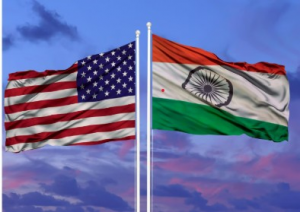Ball in Washington’s court on India-US interim trade agreement before July 9: Sources

New Delhi: With India setting its red lines on key issues in sectors such as agriculture and dairy for the proposed interim trade agreement with the US, the ball is now in Washington’s court to finalise the deal, sources said.
They said if issues are settled, an interim trade pact could be announced before July 9, which marks the end of the 90-day suspension period of the Trump tariffs announced April 2 on dozens of countries, including India.
“India has drawn its red lines… now the ball is in the US court,” they said.
In February, the two countries announced starting negotiations for a bilateral trade agreement (BTA). They fixed a deadline to conclude the first tranche or phase of the BTA by fall (September-October) this year. Before that, the two sides are locking to finalise an interim trade pact.
On April 2, the US imposed an additional 26 per cent reciprocal tariff on Indian goods but suspended it for 90 days. However, the 10 per cent baseline tariff imposed by America remains in place. India is seeking full exemption from this 26 per cent tariff.
“If the proposed trade talks fail, the 26 per cent tariffs will come into force again,” one of the sources said.
Commerce Minister Piyush Goyal last week stated that India does not enter into any trade agreement based on deadlines and will accept the proposed trade deal with the US only when it is fully finalised, properly concluded and in the national interest.
FTAs are possible only when both sides get benefitted and it should be a win-win agreement, he has said.
“National interest should always be supreme. Keeping that in mind, if a deal is made then India is always ready to deal with developed countries,” Goyal had said on July 4.
The Indian team returned from Washington last week after holding talks with the US on an interim trade pact. Differences are also there on steel, aluminium (50 per cent) and auto (25 per cent) tariffs.
India has hardened its position on giving duty concessions to the US on agriculture and dairy products as both are sensitive subjects. India has never opened the dairy sector in any of the previous trade pacts signed.
US President Donald Trump last week said his administration is sending letters to the first batch of 10-12 countries, sharing details of reciprocal tariff rates and the entire process could be completed by July 9.
His comments came amid increasing suspense in India on whether New Delhi and Washington would be able to firm up a much-anticipated trade deal before the US president’s tariff deadline ends. He has, however, not named the countries.
The president has stated that the reciprocal tariffs would come into effect from August 1.
While the US is looking at duty concessions in sectors like certain industrial goods, automobiles (electric vehicles particularly), wines, petrochemical products, dairy, and agriculture items such as apples, tree nuts, and alfalfa hay; India may look at duty cuts for labour-intensive sectors like apparels, textiles, gems and jewellery, leather, plastics, chemicals, oil seeds, shrimp, and horticulture products.
The US is India’s largest trading partner from 2021-22. During 2024-25, the bilateral trade in goods stood at USD 131.84 billion (USD 86.51 billion worth of exports, USD 45.33 billion of imports and USD 41.18 billion trade surplus).
India’s merchandise exports to the US rose 21.78 per cent to USD 17.25 billion in April-May this fiscal year, while imports rose 25.8 per cent to USD 8.87 billion. The two-way trade in services expanded from USD 54.1 billion in 2018 to an estimated USD 70.5 billion in 2024.
India is also a key destination for American businesses such as professional, scientific, and technical services, manufacturing, and IT. The US accounts for about 18 per cent of India’s total goods exports and over 6 per cent in imports and about 11 per cent in bilateral trade.
India received USD 70.65 billion between April 2000 and March 2025, making Washington the third largest investor.
In 2024, India’s main exports to the US included drug formulations and biologicals (USD 8.1 billion), telecom instruments (USD 6.5 billion), precious and semi-precious stones (USD 5.3 billion), petroleum products (USD 4.1 billion), gold and other precious metal jewellery (USD 3.2 billion), ready-made garments of cotton, including accessories (USD 2.8 billion), and products of iron and steel (USD 2.7 billion).
Imports included crude oil (USD 4.5 billion), petroleum products (USD 3.6 billion), coal, coke (USD 3.4 billion), cut and polished diamonds (USD 2.6 billion), electric machinery (USD 1.4 billion), aircraft, spacecraft and parts (USD 1.3 billion), and gold (USD 1.3 billion).
PTI
News